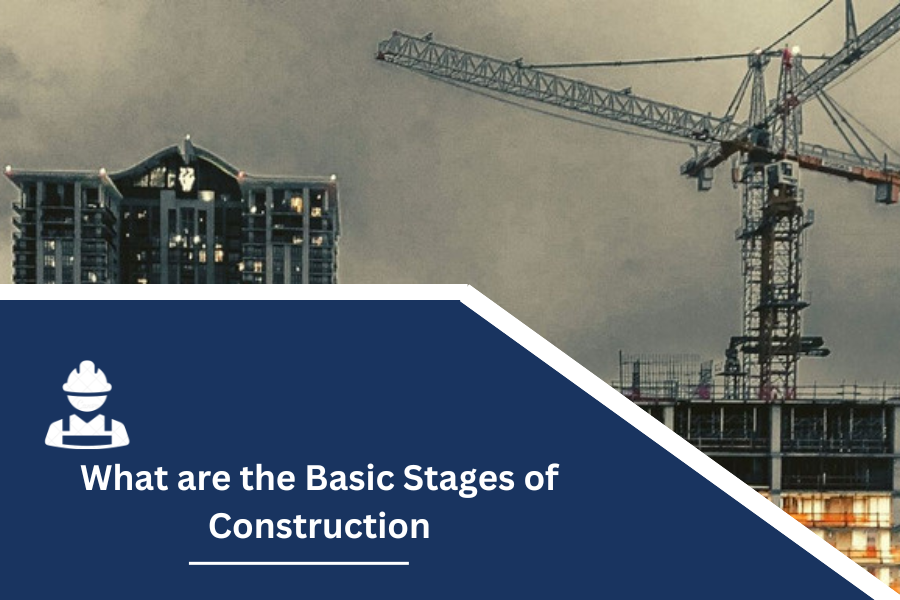What are the Basic Stages of Construction?
The basic stages of construction refer to a sequential series of fundamental steps involved in the process of creating a building or structure. These stages provide a structured framework for the entire construction project, guiding it from initial planning to the final occupancy. Each stage represents a distinct phase, addressing specific aspects of the construction process and contributing to the overall success of the project.
1. Planning and Design:
Before any physical construction begins, thorough planning and design are essential. This phase involves conceptualizing the project, creating blueprints, and obtaining necessary approvals and permits.
2. Site Preparation:
Once the planning is complete, the construction site needs preparation. This includes clearing the land, excavating, and grading. The goal is to create a level and stable foundation for the upcoming construction.
3. Foundation Construction:
The foundation is the structural base that supports the entire building. Foundations can be shallow or deep, depending on the structure and soil conditions. Common types include slab, crawl space, and basement foundations.
4. Structural Framing:
With the foundation in place, the structural framing of the building begins. This involves erecting the skeleton of the structure, typically using materials like wood, steel, or concrete. The framing creates the basic framework for floors, walls, and roofs.
5. Enclosure:
Once the frame is established, the building needs to be enclosed to protect it from the elements. This involves adding walls, windows, doors, and roofing. The enclosure phase helps create a weather-tight and secure structure.
6. Mechanical, Electrical, and Plumbing (MEP) Installation:
After enclosure, the focus shifts to installing the mechanical, electrical, and plumbing systems. This includes wiring, HVAC systems, plumbing pipes, and other essential components that make the building functional.
7. Interior Finishes:
The interior finishes bring the project to life aesthetically. This stage includes installing flooring, painting walls, adding trim, and any other decorative elements. It’s where the building starts to take on its final form.
8. Exterior Finishes:
The exterior finishes, such as siding, painting, and landscaping, enhance the building’s curb appeal. These elements not only contribute to the visual appeal but also protect the structure from weathering.
9. Final Inspections:
Before occupancy, the construction project undergoes rigorous inspections to ensure compliance with building codes and regulations. Inspectors review various aspects, including structural integrity, safety features, and adherence to plans.
10. Occupancy and Maintenance:
Once all inspections are passed, and the necessary approvals are obtained, the building is ready for occupancy. However, construction doesn’t end here. Ongoing maintenance is crucial to preserve the building’s integrity and functionality over time.
11. Conclusion:
The construction process is a complex and multi-faceted journey that requires meticulous planning, skilled labor, and adherence to safety and quality standards. Each stage plays a vital role in ensuring the successful completion of a construction project. From the initial planning to the final touches, every step contributes to the creation of a safe, functional, and aesthetically pleasing structure.
12. FAQS
1. How long does the construction process typically take?
The duration of a construction project varies based on factors such as the size and complexity of the building, weather conditions, and any unforeseen challenges. A small residential project might take a few months, while larger commercial buildings can take a year or more.
2. What permits and approvals are required before starting construction?
Before breaking ground, it’s essential to obtain the necessary permits and approvals from local authorities. These may include zoning permits, building permits, environmental clearances, and other regulatory requirements. Failure to secure proper approvals can lead to delays and legal complications.
3. How can I ensure my construction project stays within budget?
Budget management is crucial in construction. To stay within budget, it’s important to have a detailed cost estimate before starting the project, regularly track expenses, and be prepared for unforeseen costs. Hiring a skilled project manager can also help in monitoring and controlling costs.
4. What role do contractors and subcontractors play in construction?
Contractors oversee the entire construction project, managing subcontractors who specialize in specific tasks like plumbing, electrical work, or roofing. Contractors coordinate the different trades, ensuring that the project progresses smoothly and meets quality standards. Subcontractors bring expertise to specific aspects of the construction process.
5. How can I ensure the safety of the construction site?
Safety is a top priority in construction. Implementing proper safety protocols, providing safety training to workers, and ensuring compliance with occupational health and safety regulations are crucial. Regular inspections, the use of personal protective equipment, and a culture of safety awareness contribute to a secure construction environment.




